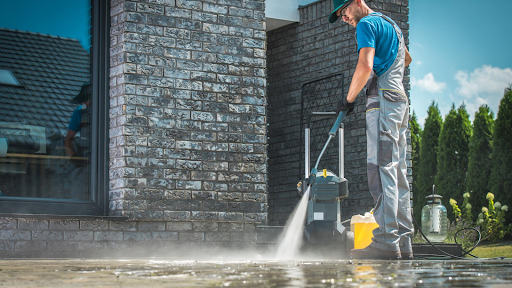So, you finally finished that renovation. Feels good, right? Fresh walls, new floors, maybe even a kitchen that looks straight out of Pinterest. But here’s the thing no one warns you about—the dust. It’s everywhere. It sneaks into drawers, hides behind furniture, and somehow floats back even after you’ve cleaned.
If you don’t deal with it properly, it’ll stick around for weeks. And trust me, living in a half-dusty, half-fresh home ruins the whole “renovation glow.” Let’s walk through how you can get rid of that mess and keep your space feeling brand new.
Why Dust from Construction Is Different
This isn’t the same dust you wipe off your TV stand on Sundays. It’s heavier, finer, and way more stubborn. We’re talking drywall powder, cement particles, sawdust, paint flakes—the works.
It spreads everywhere. It floats in the air, clogs vents, and settles in places you wouldn’t even think to check. And if you just grab a broom? Congratulations, you’ve just spread it into the air again. That’s why post-reno dust needs a smarter plan. Not just “sweep and hope for the best.”
Get Your Gear Ready
Think of this like preparing for battle. You can’t walk in with just paper towels and good intentions. Here’s what you’ll need:
- A vacuum with a strong HEPA filter
- Lots of microfiber cloths
- Mop and disposable pads
- A couple of buckets with warm soapy water
- Gloves and a mask
- Heavy trash bags
HEPA vacuums are the star here. They trap tiny particles regular vacuums spit back out. Microfiber cloths actually grab dust instead of pushing it around. And yes, wear a mask—your lungs will thank you.
Work from the Top Down
Dust falls with gravity. Start high, end low. That way, you’re not cleaning the same spots twice. Begin with ceiling fans, vents, and light fixtures. Then move down to walls, shelves, window sills. Finally, floors. Always floors last. People forget about door frames, closet shelves, and behind appliances. Guess what? Dust doesn’t forget them. Don’t skip.
Floors Need Extra Love
Here’s the truth: sweeping just stirs everything back up. It feels satisfying for five minutes, but the dust comes right back.
Instead, vacuum slowly with a HEPA filter. Go over spots more than once. Then mop with warm soapy water or even a light vinegar mix. Repeat until your mop water isn’t turning gray anymore.
Outdoors? That’s where you can bring out the big guns. A pressure washer gun can blast away stuck-on dust from driveways or patios in minutes. Indoors though—stick to vacuums and mops unless you want to ruin your floors.
Don’t Forget the Air
Here’s something most people skip—the air itself. You might wipe every surface until it shines, but if your air is still carrying dust, it’ll all settle again.
Swap out HVAC filters immediately. If you have air purifiers, keep them running nonstop for a few days. And whenever the weather lets you, open those windows. Let the stale, dusty air escape and fresh air flow in.
Fresh air isn’t just about smell. It’s about keeping your lungs safe too.
Windows and Glass Surfaces
Renovation dust loves sticking to glass. Windows, mirrors, shower doors—they all end up looking cloudy.
Wipe down frames first with a damp cloth, then clean glass with a streak-free spray. Use microfiber, not paper towels, unless you like streaks.
Blinds and shades? Yeah, they collect dust too. Run the vacuum over fabric shades. Wipe blinds slat by slat. Tedious, but worth it.
Furniture and Fabrics
Couches, rugs, curtains—soft stuff is a dust magnet. Even if you can’t see it, it’s in there.
Vacuum upholstery slowly with the right attachment. Rugs? If they’re small, take them outside and shake them hard. For bigger pieces, steam cleaning is your best friend.
Sometimes fabrics hold that drywall smell even after vacuuming. That’s where steaming helps. Don’t skip it if you want the fresh vibe back.
When It’s Time to Call for Backup
Big renovation? Huge space? Or maybe you’re just over it? That’s when hiring a Brye A+ Cleaning actually makes sense.
They have industrial vacuums, air scrubbers, and crews that know exactly where dust hides. What takes you days, they handle in hours. And honestly, sometimes your time is worth more than endless dusting.
How to Keep Things Fresh After
Once you’ve done the heavy lifting, keeping the place clean becomes way easier. A few small habits help:
- Dust once a week with microfiber
- Vacuum floors regularly with a HEPA filter
- Change air filters every couple of months
- Add doormats and use them
- Shoes-off rule indoors (it works)
These little steps stop dust from sneaking back in.
Easy-to-Miss Spots
Here’s a quick checklist of places people always forget:
- Baseboards and trim
- Outlets and light switches
- Inside kitchen cabinets
- Behind and under appliances
- Closet floors
Hit those, and suddenly the whole space feels cleaner than you thought possible.
Why It Matters
You spent money, time, and energy making your place look new. Don’t let dust dull it. Beyond looks, it’s about health. Breathing construction dust long term isn’t good for anyone.
Doing it right protects your home and your health. It also lets you fully enjoy the space you just built or remodeled.
Wrapping It Up
Post-construction cleaning isn’t glamorous. It’s work. Sometimes frustrating, sometimes never-ending. But when you finally sit down, take a breath, and realize the air is fresh and the surfaces actually sparkle—it’s worth every second.
Remember, work from the top down. Use the right tools. Take your time. And don’t be afraid to call in help when it feels like too much. A renovation should end with a clean, healthy, and fresh home. Not a dust-filled reminder of the chaos.


